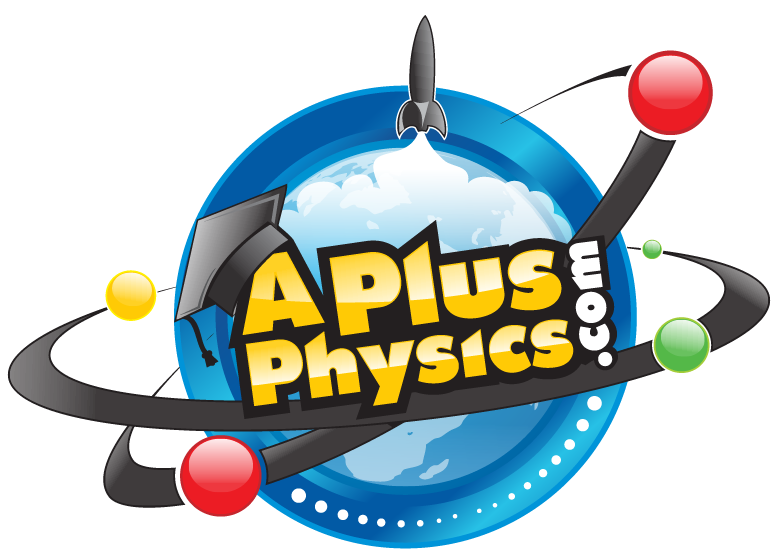Search the Community
Showing results for tags 'Speed'.
-
Name: Minimum Speed for Water in a Bucket Revolving in a Vertical Circle Category: Rotational Motion Date Added: 2017-10-30 Submitter: Flipping Physics What is the minimum angular speed necessary to keep water in a vertically revolving bucket? The rope radius is 0.77 m. Want Lecture Notes? This is an AP Physics 1 topic. Content Times: 0:13 The demonstration 0:35 Understanding the problem 1:04 Where do we draw the Free Body Diagram 2:06 Summing the forces 3:04 What happens at the minimum angular speed 3:53 Why the force of tension is zero 4:41 Solving the problem Next Video: The Right Hand Rule for Angular Velocity and Angular Displacement Multilingual? Please help translate Flipping Physics videos! Previous Video: Analyzing Water in a Bucket Revolving in a Vertical Circle Please support me on Patreon! Thank you to Aarti Sangwan and Christopher Becke for being my Quality Control Team for this video. Minimum Speed for Water in a Bucket Revolving in a Vertical Circle
-
Name: Nerd-A-Pult - Measuring Initial Velocity Category: Kinematics Date Added: 27 May 2014 - 09:29 PM Submitter: Flipping Physics Short Description: None Provided We need to know the initial velocity of a projectile leaving the Nerd-A-Pult. That means we need the initial speed and the initial angle. This video shows exactly how I measured both. Content Times: 0:30 Taking measurements to determine the launch angle 1:20 Finding a triangle 2:02 Defining the angles 3:35 Determining the launch angle 4:38 Using the frame rate to find the change in time 5:08 Measuring the distance travelled during the first frame 6:12 Why initial speed and not initial velocity? 6:39 Determining the average launch speed View Video
-
Name: Finding Average Speed for Pole Position: Example Problem - Not as easy as you may think Category: Kinematics Date Added: 21 May 2014 - 08:50 AM Submitter: Flipping Physics Short Description: None Provided This video is an example problem that walks through finding the average speed for the last 2 laps of the 4 lap qualifier for the Indianapolis 500 assuming an average speed for the first 2 laps. It is actually more difficult than it initially appears. Content Times: 0:36 Reading the Problem 1:06 Translating to Physics 3:25 A Visual representation of our Known Values 4:07 Beginning to Solve the Problem 5:27 Finding the Time for Part 1 7:15 Finding the Total Time 9:00 Finding the Time for Part 2 10:15 Finding the Average Speed for Part 2 10:45 A Common Mistake 12:07 The Answer 13:15 A Question about Significant Digits View Video
-
Name: Velocity and Speed are Different: Example Problem Category: Kinematics Date Added: 21 May 2014 - 08:47 AM Submitter: Flipping Physics Short Description: None Provided This example problem works shows that Velocity and Speed are different. It also illustrates that Speed is Not Velocity without direction. Content Times: 0:16 Reading the Problem 1:10 Translating the problem to physics 1:53 Part (a) Average Speed 2:57 Part ( Average Velocity 4:34 Speed is Not Velocity without direction Want Lecture Notes? Next Video: Understanding and Walking Position as a function of Time Graphs Previous Video: Average Velocity Example Problem with Three Velocities View Video
-
Name: Introduction to Velocity and Speed and the differences between the two. Category: Kinematics Date Added: 21 May 2014 - 08:44 AM Submitter: Flipping Physics Short Description: None Provided This video introduces the definition of Velocity. It also walks through a simple, introductory average velocity example problem. At the end it defines speed and discusses the difference between speed and velocity. Content Times: (click to skip to that time) 0:18 Velocity Definition 2:12 Velocity has both Magnitude and Direction 3:06 Example Problem 8:41 Speed Definition 9:15 Differences between Speed and Velocity 11:00 Outtakes View Video
-
What is Pavel time? Pavel time is the time right before a deadline when actual work gets done. How does this relate to physics? It relates specifically to Albert Einstein's theory of relativity. Part of the theory of relativity states that measurements of various quantities are relative to the velocities of observers. In particular, space and time can dilate. So, in real life, as an object approaches the speed of light, it gets squished and time slows down for the object. How does this relate to Pavel time? In my theory of relativity, as more work gets done more quickly, time slows down and allows me to finish whatever assignment I have before the deadline.
- 1 comment
-
- 1
-

-
- relativity
- time
-
(and 2 more)
Tagged with:
-
Cheetahs are basically the supercars of the animal kingdom. They have a top speed of 75 miles per hour and a 0 to 60 time of 3 seconds, faster than a vast majority of production sports cars. A light and aerodynamic bone structure reduces drag forces to the absolute minimum, a long tail provides balance while sprinting and counter-forces while turning which allows for extreme agility, and flat paws provide better traction than most cats. A light weight of 125 pounds on average allow the cheetahs powerful muscles do the minimum amount of work (since work=displacement*force) and thus energy is conserved to allow for more running. While cheetahs can only sustain top speed for about 550 meters, they are able to travel faster than most anything they're hunting due to some interesting bio-mechanics. For starters, cheetahs have an incredibly long stride length of 25 feet, a little over 4 times longer than the average stride of an elite miler and just over 3 times longer than the enormous 8 foot stride of 100m world record holder Usain Bolt. Just as Bolt dominates international competition by traveling farther on each stride than the competition, cheetahs can easily reach 70 mph by taking giant bounding strides. The cardiovascular system of the worlds fastest cat is a marvel in itself, with a much larger than average heart pumping more blood per beat than many other animals can manage. However to supply oxygen to this heart is a unique respiratory reflex. Like most four legged animals, cheetahs are forced to breath one breath for every full stride which while makes for large air intake, severely restricts endurance. What makes cheetahs unique is the fact that their abdominal cavities are tied to their diaphragms. When they push off with their hind legs the body tips up away from the ground a little and the organs slide back in the abdominal cavity, drawing the diaphragm back and forcing inhalation. When the front paws hit ground the body tips forward and the organs slide forward, expelling air from the lungs. The motion of the internal organs along with expansion and contraction of the abdominal cavity allow for cheetahs to take in the enormous amount of oxygen they need to sustain speeds of 70 to 75 mph. For a nice video of this check out: stay posted for the reasoning why cheetahs can't run far and humans can't run fast.
- 3 comments
-
- speed
- usain bolt
-
(and 3 more)
Tagged with:
-
Version 1
44 downloads
A lab in which students oscillate an extended spring to create standing waves. By measuring the period or frequency of the standing waves, as well as the wavelength, students calculate the speed of the wave using the wave equation. Ultimate goal of this lab is to have students understand that the type of wave and the medium determine the speed of the wave. The wave equation, holds true and describes a relationship, but the speed of the wave is not determined by adjusting the wavelength or frequency. Materials: Long springs stopwatches meter sticksFree
Terms of Use
The pages of APlusPhysics.com, Physics in Action podcasts, and other online media at this site are made available as a service to physics students, instructors, and others. Their use is encouraged and is free of charge. Teachers who wish to use materials either in a classroom demonstration format or as part of an interactive activity/lesson are granted permission (and encouraged) to do so. Linking to information on this site is allowed and encouraged, but content from APlusPhysics may not be made available elsewhere on the Internet without the author's written permission.
Copyright Notice
APlusPhysics.com, Silly Beagle Productions and Physics In Action materials are copyright protected and the author restricts their use to online usage through a live internet connection. Any downloading of files to other storage devices (hard drives, web servers, school servers, CDs, etc.) with the exception of Physics In Action podcast episodes is prohibited. The use of images, text and animations in other projects (including non-profit endeavors) is also prohibited. Requests for permission to use such material on other projects may be submitted in writing to info@aplusphysics.com. Licensing of the content of APlusPhysics.com for other uses may be considered in the future.



